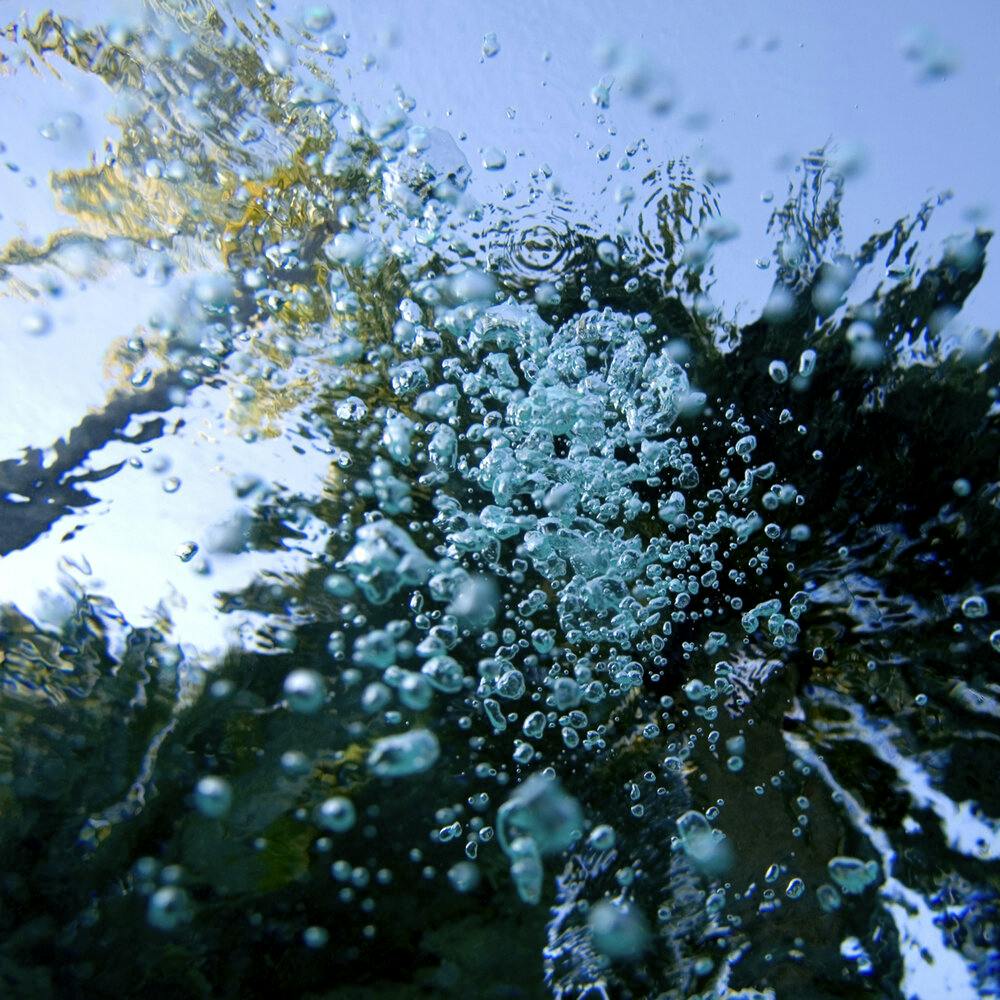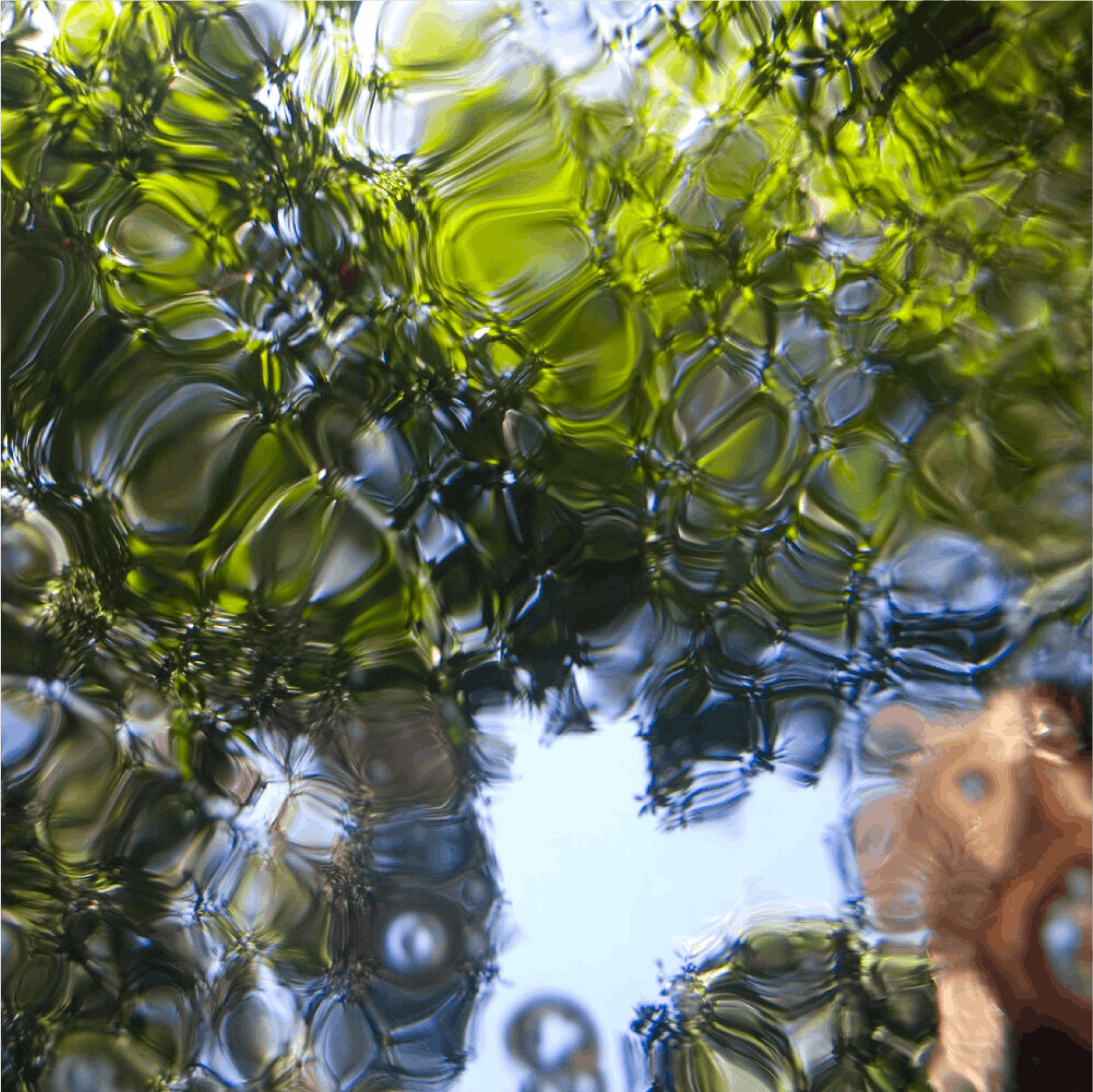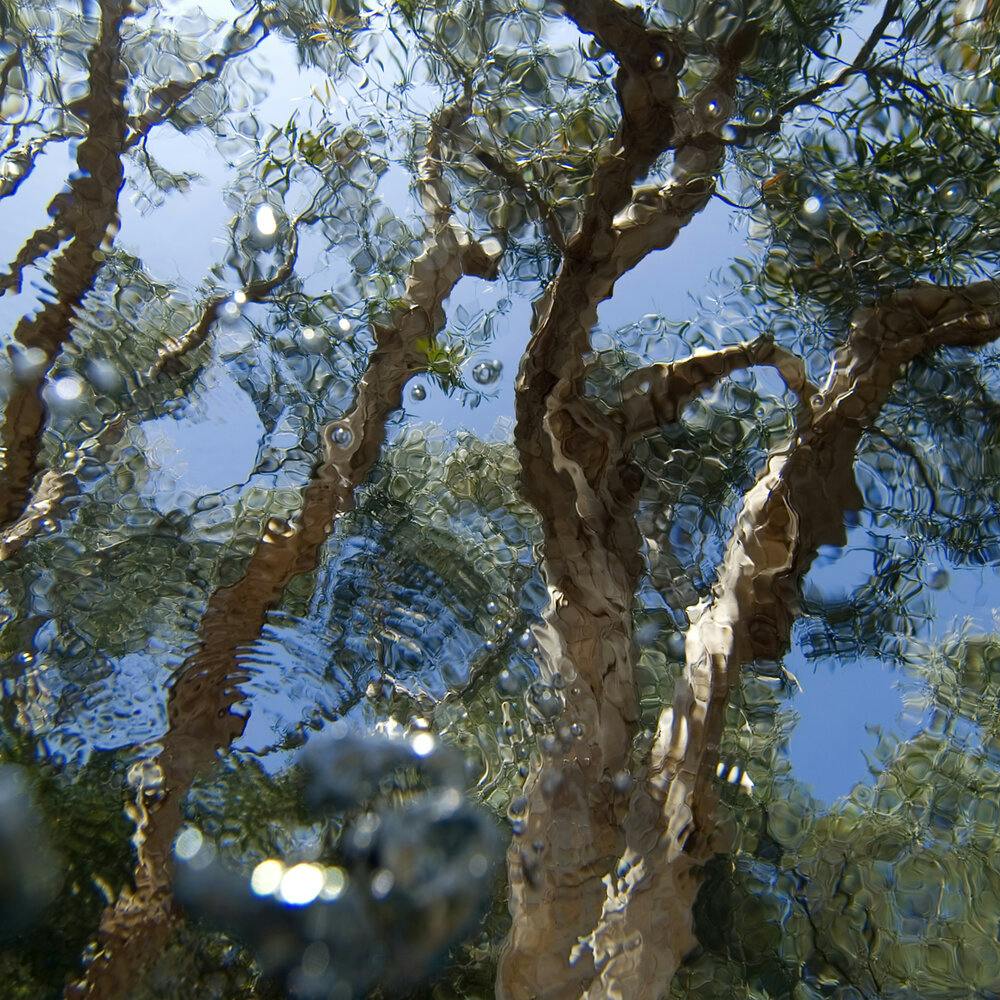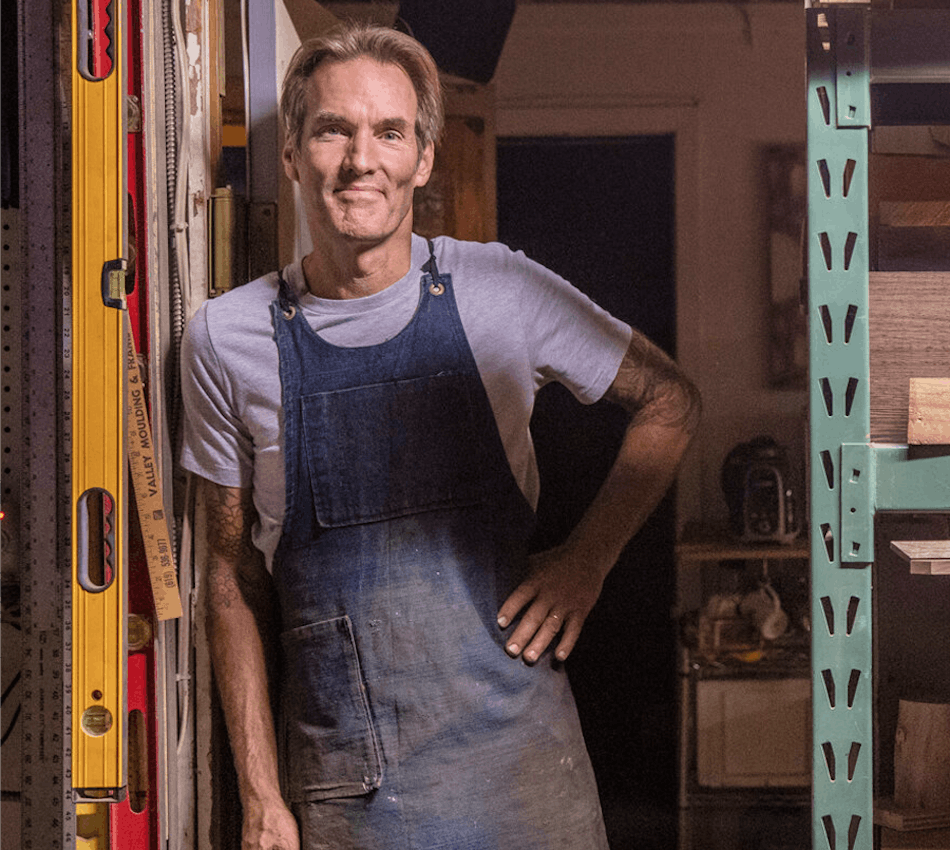
Daniel Wheeler, “GULP #009”, 2006, Archival pigment print, acrylic, sinta 40 x 40 inches
Everyone knows how a “bird’s-eye view” allows you to see everything from above. And a “worm’s-eye view” gives us a low-angle look from the ground. But Daniel Wheeler went deeper—literally—into what he called the fish-eye view. In his photographic installation Gulp, Wheeler submerged himself at the bottom of swimming pools to capture the world not from the sky or the soil, but from beneath the surface, looking up.
He could have chosen a variety of places to capture his underwater images—a barrier reef, an ocean, a lake. But instead, he chose local swimming pools. One of them was mine.
Watching Daniel work in my own backyard was unexpectedly profound. I’d seen those trees and that pool every day, but he saw it differently. He showed up in flip-flops, carrying his gear, and spent more time than I expected standing by the pool’s edge. He watched the water, waited for the wind to shift, and noted where the trees cast their reflections. The leaves hanging over the edge weren’t a nuisance to be cleaned—they were exactly what he wanted. I had always seen them as a mess; he saw them as part of the composition. Since then, whenever the trees drop their leaves, I don’t think about skimming them out—I think of Gulp.

Gulp #021, 2006, Archival pigment print, acrylic, sintra, 40 x 40 inches
Wheeler wore a wetsuit, goggles, flippers, and an air tank, and used a waterproof camera to dive to the bottom of the pool. From there, he captured the images—not of what was below, but of everything above, seen through the distorting lens of water.
The resulting photographs pull the viewer into a quiet kind of disorientation. Floating leaves, swaying tree limbs, and shifting sunlight appear suspended in a watery lens. What’s normally above becomes a submerged echo. You feel like a creature looking up from the depths.
It’s not unlike Through the Looking Glass, but turned inside out. Gulp isn’t just a collection of poolside pictures—it’s a perspective shift. A way of seeing the world differently. Wheeler invites us to pause and reverse our gaze—to look up, not out. To let go of the familiar angle and reconsider our surroundings from an unexpected vantage point.
In the end, Gulp transforms a swimming pool into something else entirely: a stage for light and reflection, a mirror tilted upward, a temporary window into another way of seeing.

Daniel Wheeler, Gulp #020, Archival pigment print, acrylic, sintra, 40 x 40 inches

Daniel Wheeler, GULP #034, 2007, Archival pigment print, acrylic, sintra, 54 x 54 inches

Daniel Wheeler Daniel Wheeler, “GULP #064”, 2007, Archival pigment print, acrylic, sintra 40 x 40 inches

Daniel Wheeler, Gulp #055, 2007, Archival pigment print, acrylic, Sintra, 40 x 40 inches

Daniel Wheeler
Born: United States Lives and Works: Los Angeles, CA Education: Bachelor of Arts, Brown University Exhibitions (selected): 2013 - The Campbell Hall Center for Spiritual Practice, Los Angeles; 2004 - You Are Here, Otis College of Art and Design, Los Angeles, CA; 2002 - Out of True, University of California, Santa Barbara Art Museum, CA; 2000-2001 - Bird Hub(commissioned by The Lux Art Institute) San Elijo Lagoon, Encinitas, CA; 1992 - Oddly: Works By Four Los Angeles Artists, The Oakland Museum, Oakland, CA Awards, Grants, and Artist Residencies (selected): 2014 - Faith and Form; IFRAA International Awards for Religious Art and Architecture
